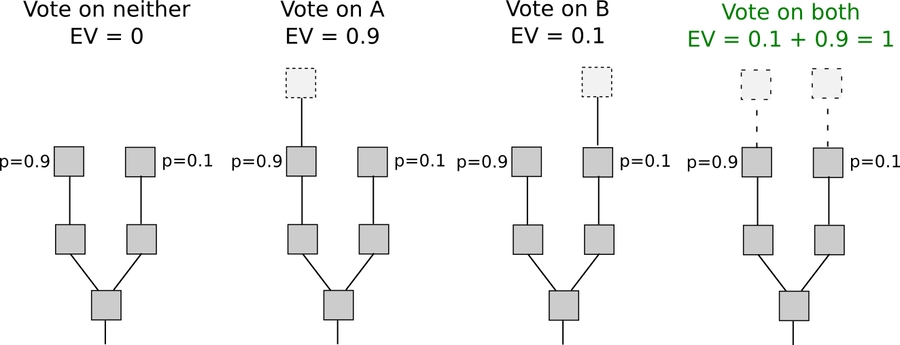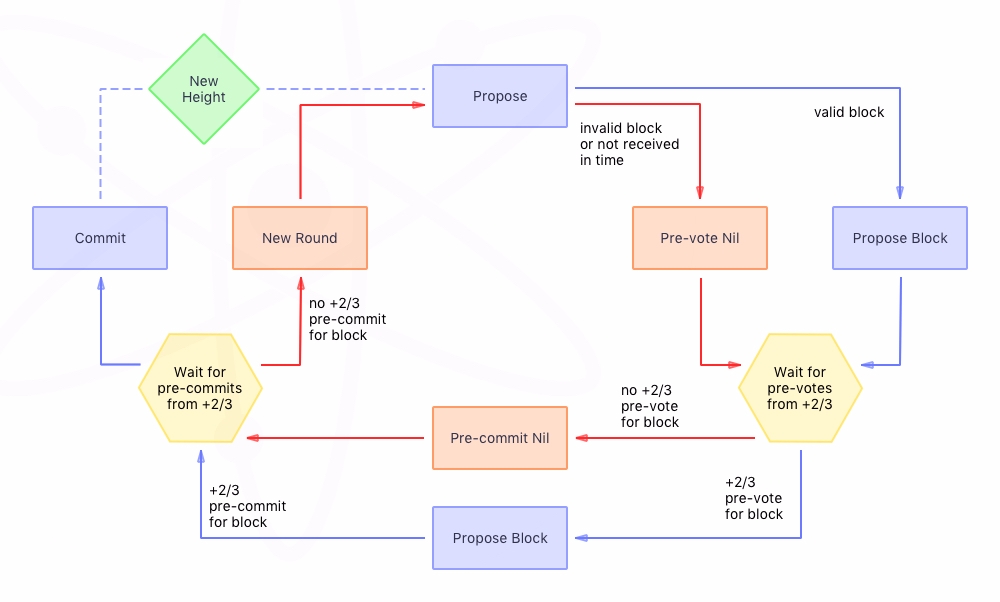PoS
Proof Of Stake
The proof-of-stake (PoS) mechanism works using an algorithm that selects participants with the highest stakes as validators, assuming that the highest stakeholders are incentivized to ensure a transaction is processed. The idea is that those with the most coins in circulation have the most to lose so they are positioned to work in the interest of the network. The amount of coins that a network may require changes just like the difficulty in PoW.
In PoS, the blocks aren’t created by miners doing work, but by minters staking their tokens to “bet” on which blocks are valid. In the case of a fork, minters spend their tokens voting on which fork to support. Assuming most people vote on the correct fork, validators who voted on the wrong fork would “lose their stake” in the correct one. The common argument against proof-of-stake is the Nothing at Stake problem. The concern is that since it costs validators almost no computational power to support a fork unlike PoW, validators could vote for both sides of every fork that happens. Forks in PoS could then be much more common than in PoW, which some people worry could harm the credibility of the currency.
Coin age
To distinguish between users who have just obtained their coins and users who have been holding their coins for a period of time, proof-of-stake algorithms use the idea of coin age.
Coin age is used in the calculation for both stake weight AND the staking reward. Staking reward is set by the coin's APR. The effect is a stable, consistent interest for all staking wallets, regardless of input size or reasonable downtime.
The longer a user holds the coins, the higher the changes of winning the right to create a block of the network blockchain and get a reward.
Incentivizing to stay connected
In order to keep most user active, the reward for the creation of a block increase if there is too many users offline, so there is more benefits to go online.
Penalizing offline users
Most if not all PoS algorithm penalize Holders which can stay offline for long periods of time. Otherwise they could get control by connecting back to it and having over 50% of voting power because of the size of their holdings.
Pseudo anonymous users
Validators within the PoS network are anonymous users who are identified only by their wallet address. This pro-vides no additional accountability over PoW for bad actors who can amass significant wealth on the network.
Security
The security model is an economic one, based on the “game-theory” assumption that the cost of acquiring the tokens necessary to become a block producer is more than an attacker is willing to bear, that couples the network’s security to the value of its token, ie: the higher the value of the token, the more secure the network becomes.
nothing-at-stake attack
Without economic penalties for attackers, the chain can suffer nothing-at-stake attacks where stakers are incentivised to validate all proposed forks to maximise their returns.

Algorithm

The validators will have to lock up some of their coins as stake.
After that, they will start validating the blocks. Meaning, when they discover a block which they think can be added to the chain, they will validate it by placing a bet on it.
If the block gets appended, then the validators will get a reward proportional to their bets.
BlackCoin / Qtum specifics
TODO
Used in
Decred,
Ethereum (soon),
Peercoin
Ada
EOS.IO
Gridcoin
Nxt
Waves
BlackCoin
Qtum
In Future with Casper in Ethereum
At the beginning of each cycle (2048 blocks), a random seed is derived from numbers that block miners chose and committed to in the penultimate cycle, and revealed in the last.
Using this random seed, a follow the coin strategy (similar to follow-the-satoshi) is used to allocate mining rights and signing rights to stakeholders for the next cycle (the more coins (rolls) you have - the more your chance to be a miner/signer).
Blocks are mined by a random stakeholder (the miner) and includes multiple signatures of the previous block provided by random stakeholders (the signers).
Mining and signing both offer a small reward but also require making a one cycle safety deposit to be forfeited in the event of a double mining or double signing.
Pros
Cost efficient: speed, energy, hardware
The more people use the network and have coins, the more secure the network.
More decentralized
Cons
Economic inequality, rich get richer.
Attackers can calculate the probability of winning the reward to create a block of the blockchain based on who has how many coins.
Initial targets for Ethereum’s Casper implementation are only 100 TPS
Nothing at Stake attacks
Last updated
Was this helpful?